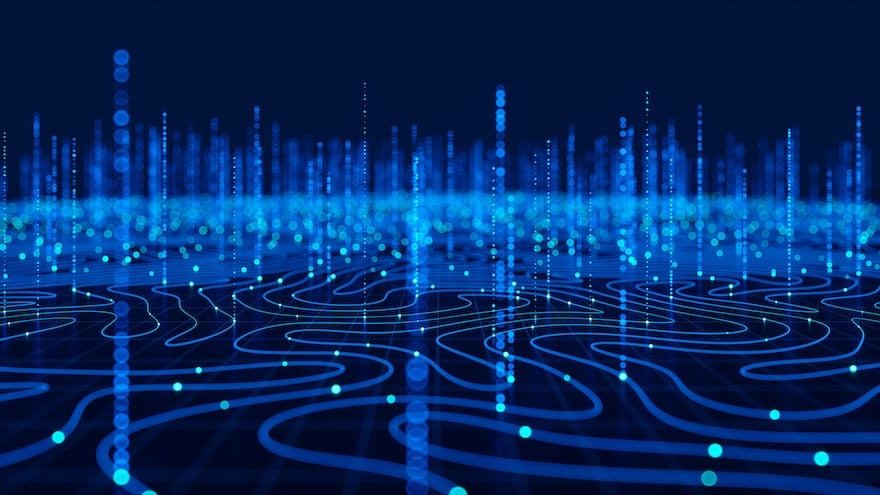
Several of us here at CyberArk have written and spoken at length about the subjects of artificial intelligence and quantum computing, including both the benefits and risks they pose to society.
But until now, we’ve really only covered them as two separate categories. Not much of what we’ve discussed has contemplated a fusion of the two. Recently, Sitaram Iyer, Area VP Emerging Technologies at CyberArk, joined DOS Won’t Hunt to discuss the promises and perils of AI and quantum computing in the FinTech sector.
He talked a lot about the dangers of threat actors gaining the “keys to the kingdom,” what with quantum computers being able to crack the hard problems underpinning classic cryptography like RSA and ECDSA.
This talk got me thinking beyond FinTech: What else is possible when you blend AI and quantum computing together?
Utopian Futures Versus Dystopian Nightmares?
I don’t think it’s that cut and dry, and as both AI and quantum continue to progress, we’ll see these capabilities evolve. One thing that is clear from the community is that each will have a significant impact on one another. And this was already being surmised five years ago, when Google CEO Sundar Pichai said, “AI can accelerate quantum computing and quantum computing can accelerate AI.”
But how, exactly? Let’s walk through the potential interplay together, starting with some ways quantum computing could affect AI.
Quantum-Powered Artificial Intelligence
While AI is already here and developing rapidly, it faces some shortcomings as it stands with classic compute. It’s limited to silicon-based, binary computation, which takes an enormous, not to mention expensive, amount of processing power. (To put that into perspective, OpenAI’s ChatGPT operation costs approximately $700,000 daily).
These limitations can hinder overall AI/ML performance. Especially when it comes to those large, complex operations and calculations. Quantum computers, on the other hand, can harness quantum mechanics and qubits. They, by their very nature, are designed to expand computational ability and speed up processing power.
This could further enhance AI/ML speed, efficacy and precision, allowing for pronounced capabilities in:
- Recognizing patterns, and anomalies, in large datasets to aid in clustering and classification
- Creating more robust data maps beyond what classical computers can ascertain
- Accelerating architectural development
- Speeding up machine learning
- Bolstering AI security through quantum cryptography
As Martin Giles notes in MIT Technology Review, “As quantum computers get better at harnessing qubits and at entangling them, they’ll also get better at tackling machine-learning problems.”
AI-Enhanced Quantum Computing
While quantum computing could revolutionize AI, the reverse is also true. Together, they are poised to be the “Next Global Shock,” according to WEF, and risks like store now, decrypt later attacks are already making waves.
WEF further explains that quantum computing will cause the “most significant overhaul in our digital history.” Now, quantum computers aren’t the best solution for every computing problem, and they won’t just replace traditional computers at the drop of a hat. They also aren’t ready for widespread practical applications yet.
But maybe, the answer to accelerating quantum does, in fact, lie in the development of revolutionary AI systems. Researchers have found a strong similarity between the way quantum computers perform operations and how artificial neural networks are constructed. One research group even claims they have “mathematically proven” that AI can help us better understand quantum physics.
Quantum computers can be powerful, but AI could help:
- Optimize decision-making, analysis and breakthroughs across innumerable quantum operations
- Rapidly analyze datasets, insights, trends and predictive analytics
- Fortify cybersecurity
- Assist with building quantum-resistant algorithms (can also be used to break existing ones, such as this recent research published by Meta)
- Drive and automate error correction in quantum computers, a critical aspect needed to reach practical quantum computing
What Else Is Holding Back Quantum Advancements?
Currently, quantum computers are large and expensive. They consume a significant amount of power and require robust cooling systems (that must maintain a vacuum, with temperatures near absolute zero, to maintain stability during calculations).
The Drawbacks of Fusing AI and Quantum Computing
In addition to these quantum-specific technical challenges, there are also potential drawbacks to consider when fusing the two technologies together. By layering AI and quantum systems together, yes, we can expect both disruption and revolution through faster processing and increased accuracy and efficacy.
However, complexity, transparency and explainability become magnified, and we’re left with a lot of questions and concerns around how to manage these systems, as well as how to understand the risks and benefits gained.
Additionally, in the case of quantum-enhanced AI, the potential for even more pronounced bias comes into play, as these systems would magnify what data is already present. And if an AI system is inherently biased toward or against an audience, a quantum computer may exacerbate that.
Furthermore, if threat actors, especially nation-states, were to get their hands on a functional quantum computer, they could “launch damaging attacks,” using more sophisticated tactics, according to Kevin Bocek, Senior VP of Innovation at CyberArk—who states the coming quantum storm may be akin to Heartbleed on steroids.
“You can imagine Heartbleed, or really bad Heartbleed, and then really, really bad, bad, bad Heartbleed, and then it keeps on getting worse and worse as the various sets of adversaries gain capabilities.”
As we collectively continue to explore the fusion of AI and quantum computing, it’s important that we remain cognizant of these challenges. By building a robust, identity-first foundation for cybersecurity, we can safely capitalize on the promises these powerful technologies bring, while mitigating the perils that come with them.
Kaitlin Harvey is digital content manager for machine identity security at CyberArk.























